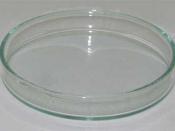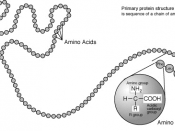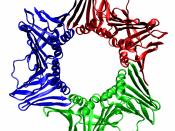Basic Problem:
Jelly is made from protein, gelatin, this is dissolved in hot water and as it cools, it sets. For a childrens party it was decided to make some fruit jellies, these were made by putting sliced pineapple into the jelly before it set, the following observations were made:
oThe jelly set normally when tinned pineapple was added.
oWhen fresh, unripe pineapple was used the jelly set but was not as firm.
oWhen fresh, ripe pineapple was used, the jelly did not set at all
But why?
The reason the jelly is not setting is due to protease, which is breaking down the protein in the jelly, protease is an enzyme, and its rate of activity is affected by many things, such as temperature and concentration.
Theoretical investigation.
If the pineapple juice contains an enzyme which is stopping the jelly setting then this can be investigated by using jelly in Petri dishes with holes or wells cut into it.
If some pineapple juice is added to these wells then they should get bigger as the enzyme in the pineapple juice will be breaking down the gelatin around the outside of the well, causing it to expand. The temperature and concentration will also affect the size of the wells as these are factors which affect an enzyme controlled reaction.
The investigation and prediction.
I am going to investigate the effect of protease concentration on the size of the wells, as it is related to the original problem. It seems apparent that the ripeness of the pineapple is related to the concentration of enzymes within it. Perhaps this increased protease concentration is needed for seed dispersal, as pineapple is a fruit and as it ripens the concentration of protease increases. I predict the greater the protease concentration which is used then...


